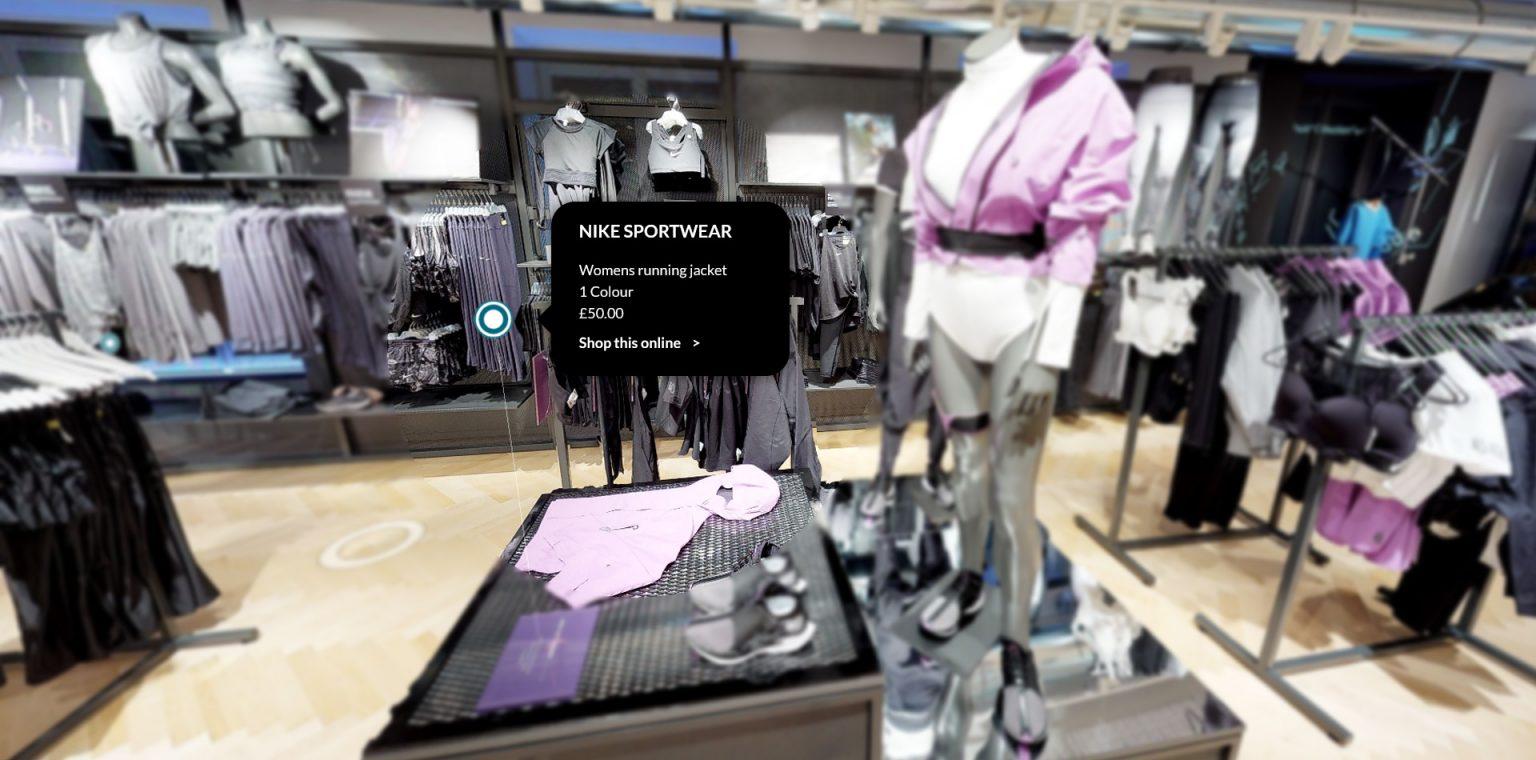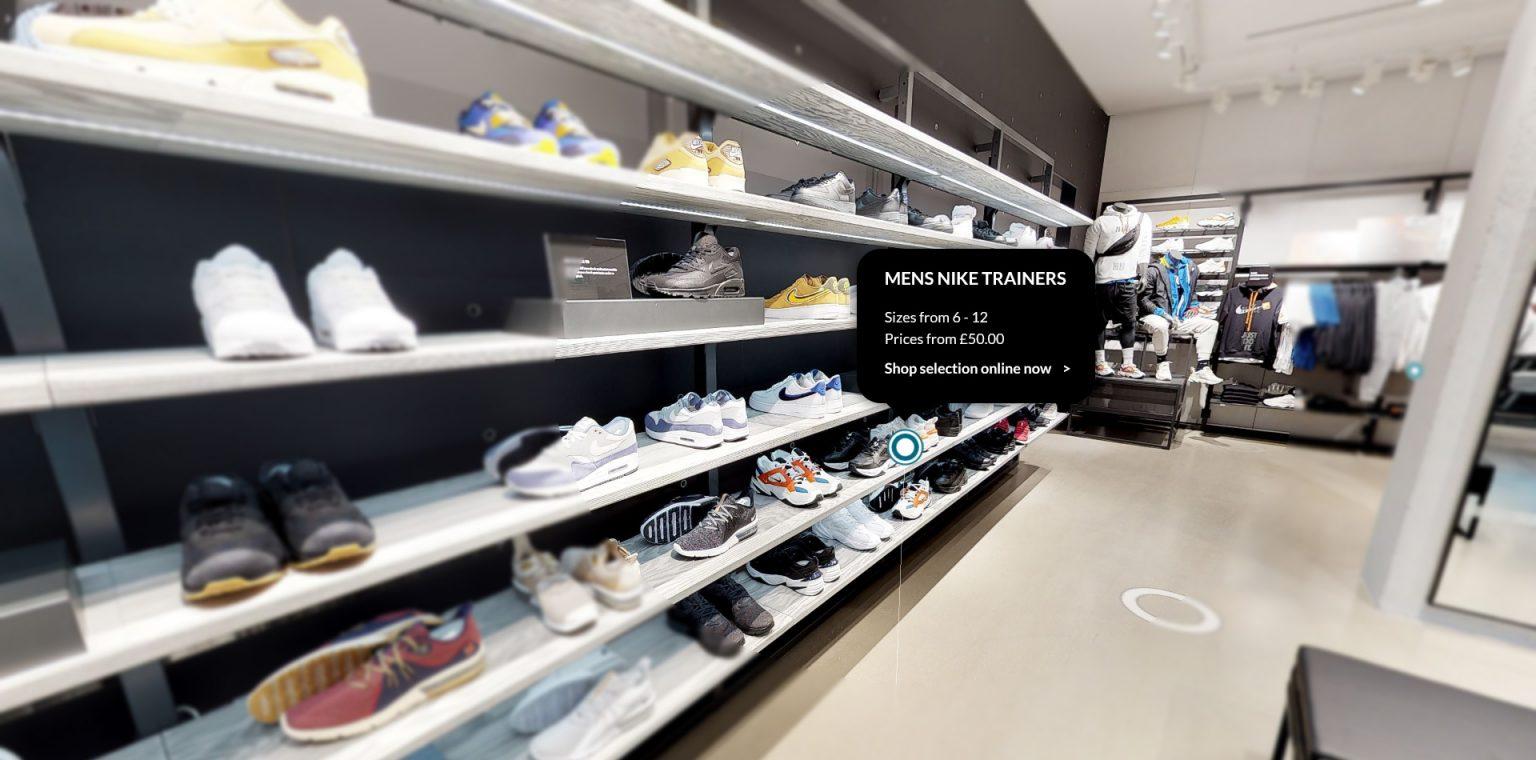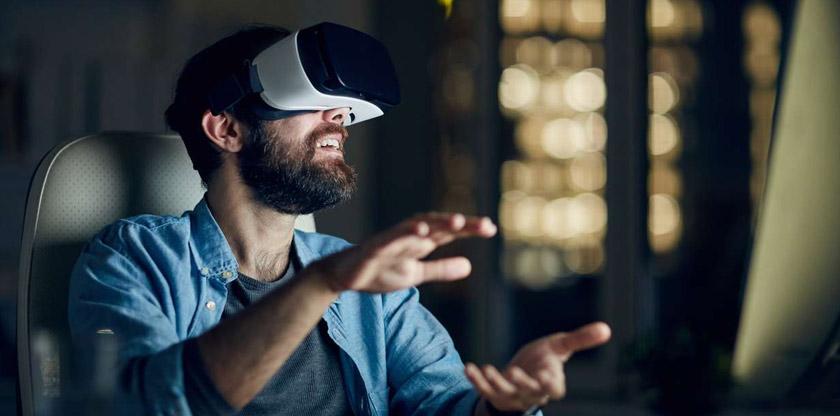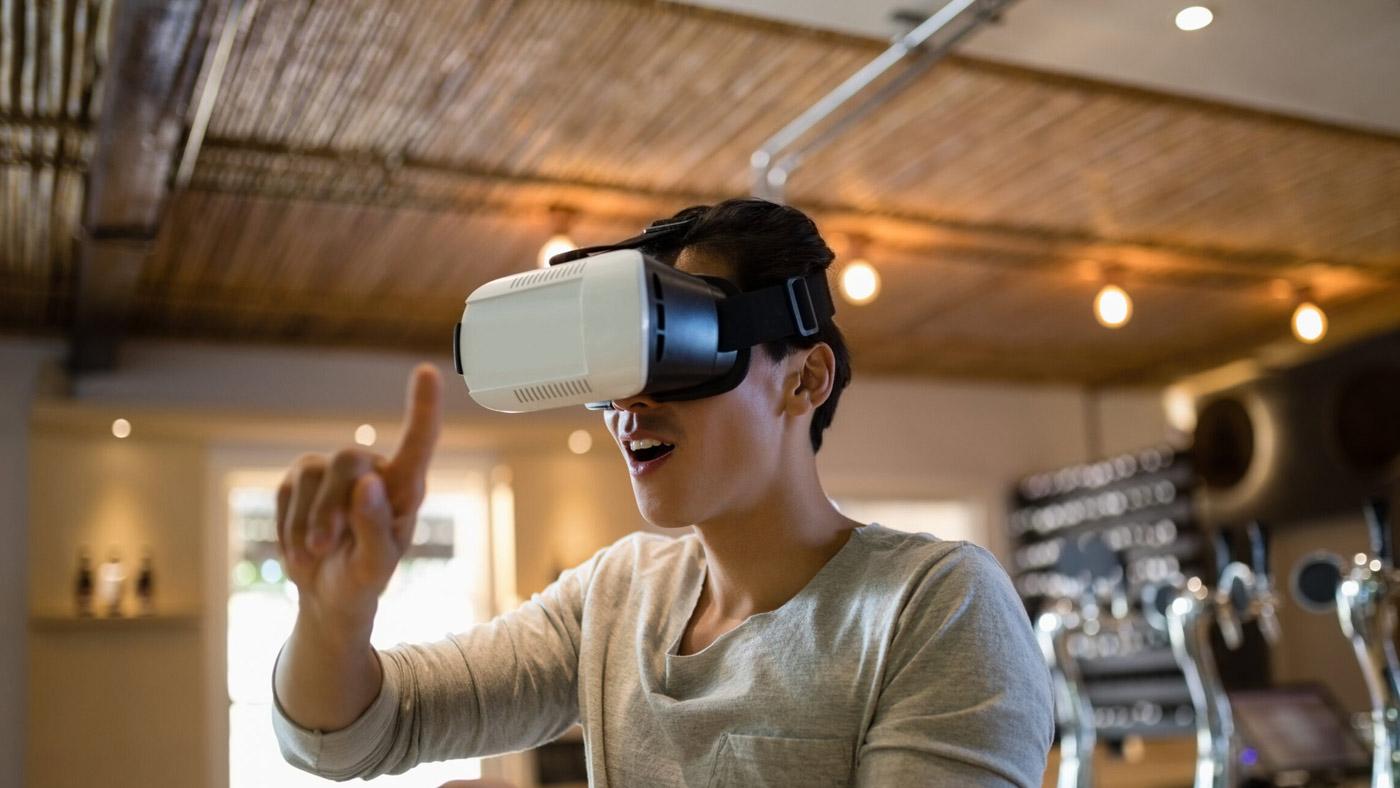Virtual Reality is a modern technology that is altering the way people anticipate and experience things. It has a significant influence across various industries, including the eCommerce business. The introduction of Virtual Reality (VR) in the eCommerce industry has shown an increase in revenue.
Insight of Virtual Reality (VR) Technology
Since virtual reality has stepped into the market, it has become a trend. With the combination of virtual and reality phrases, the new term came into existence, i.e., Virtual Reality (VR). Virtual, by definition, refers to something close to us, whereas Reality refers to what we see and experience daily. In basic terms, it can generate a simulated world around the user or a virtual world that does not exist in reality. High-performance computers and sensory devices, such as a headset and gloves, are used to produce virtual reality in the actual world.
Virtual reality (VR) uses technology to create an immersive artificial world that appears to be extremely real. Users can look up, down, or any other direction like they are on a 3D Virtual Tour using a virtual reality viewer as if they were there. Virtual reality can help in different fields, including entertainment and gaming, commerce, education, and training.
The following are several sorts of virtual reality experiences:

Benefits of Virtual Reality in eCommerce:
There are plenty of ways in which Virtually Reality can be beneficial in an eCommerce sense for online sellers. VR allows for immersive, creative and memorable customer experiences. Allowing for a tremendous boost in conversion rates.
As everyone knows by now, social media is the king of marketing in today’s landscape. Implementing VR into social media campaigns is a goldmine for brand awareness. Showcasing Virtual Reality in your campaigns provides an instant talking point about your brand, meaning people are more likely to share these posts – allowing for more impressions and clicks.
There are plenty more ways in which VR can be beneficial to online sellers. Below are 7 reasons how it can benefit your business:
Complete Immersive:
A computer model, a powerful computer that can respond to the user’s activities, and some surround-sound loudspeakers are three components that contribute to a fully immersive VR experience.
Non–Immersive:
Using a widescreen and headphones is a non–immersive alternative. Though it is a form of virtual reality, it does not immerse a user.
Collaborative:
The virtual experience is identical to that of being immersed, but it includes the option of sharing the virtual environment with others.
Web Based
VRML (Virtual reality markup language) is a web-based virtual reality format similar to HTML.
Now, before looking at VR aspects that can help E-Commerce businesses, some difficulties are faced by merchants.

Challenges faced by Merchants
Virtual reality has become a powerful marketing tool for firms, and it stands out in terms of giving people a live experience. The following are some challenges faced by merchants:
- The expense of building storefronts is one of the most significant difficulties that retailers face.
- Another factor to consider is the danger of product transit. Since some items are delicate and prone to breaking, they need to be handled with care.
- In physical businesses, trying out more things and then converting them into sales is a time-consuming strategy.
- Most of the time, shops cannot unpack the items; thus, the customer’s interest in the actual texture and model of the product persists.
- Actual stores cannot enjoy the advantages which eCommerce stores can.
So, now the problems have been discussed, it is time to discuss the solutions that can persuade you to steer your organisation along this route.
How can VR help to improve your eCommerce business?
The use of virtual reality in e-commerce business is on the rise, and for a good reason. While e-commerce allows customers to purchase from the comfort of their own homes, virtual reality will enable them to interact with your business and experience the products firsthand. What does this signify for online shopping? Increased sales! But it is not the only advantage of virtual reality in the e-commerce business.
As if higher sales were not enough, Virtual Reality also contributes to e-commerce stores in five additional ways.
Awareness
Getting products out into the market is crucial for every organisation. On the other hand, selling items is just as necessary as engaging customers in innovative marketing or advertising strategies. Customers are being engaged through virtual experiences by several e-commerce stores or businesses. Retailers can use VR:
- To create creative marketing initiatives that attract the attention of customers and impact their attitudes and behaviours.
- To increase brand awareness and providing clients with the opportunity to experience the benefits of such traits virtually.
Convenience
With convenience and efficiency becoming increasingly important in e-commerce, one noticeable impact VR has on e-commerce is its convenience. Furthermore, it dramatically reduces the time spent looking for products and completing payments, allowing more people to do various tasks in less time. People used to go to actual stores to try out and experience items. VR, on the other hand, is radically changing the game, allowing retailers to:
- Build virtual showrooms so clients may look at things without having to leave their homes.
- Create virtual landscapes of projects so consumers can get a first-hand look at all of the features and capabilities.
Cost Cutting
VR has the potential to reduce customer costs in addition to saving time and providing convenience. With the ability to picture any object they want, the phrase “test before purchasing” is more apt than ever. Customers may now know if their purchases are the correct match for what they need even before buying it, rather than finding out after they’ve bought it, thanks to VR.
Customers can use VR for:
- Put on a VR headset, stand in their living room, flip through a catalogue, and make better-educated purchasing selections.
- Instead of visiting retail locations and scrolling through product descriptions and dimensions, they can see what they want from any place.
No Distractions
It is a common misconception that when individuals go shopping, they become distracted by the surroundings or engage in discussion with other shoppers. It tends to limit their attention span, which has an impact on their purchasing experience. Apart from that, another critical factor is product comparison online. Whether the customer is at your shop or making an online purchase, the need to compare the product they chose with other accessible possibilities in the market is a long-standing one. Use VR:
- To lead the customers’ minds in one way and follow and examine products to increase user engagement.
- To start giveaway activities and intriguing virtual shopping incentives to keep customers engaged in improving sales.
Simulation of Real-Life Situations
The capacity to build an immersive experience capable of imitating real life is maybe one of the most significant benefits VR brings to the e-commerce business. Although VR has contributed to the gaming field, the technology may provide customers with really immersive experiences in virtual stores. Using Virtual Reality:
- It is not only that customers can shop for things online using real-life interfaces but also virtually try them out.
- Retailers may overcome physical constraints and provide access to all product features, resulting in many customers entering the sales funnel and higher conversion rates.

VR Implementation in Ecommerce
Because virtual reality is new in the market, getting the eCommerce virtual reality tool off the ground and into the hands or brains of your customers could be a difficult task. Once you have found an expert team to assist you with the procedure, these are the steps you should take.
Specify your objectives
Using virtual reality is not an aim. It is crucial to understand what you expect from this new, complicated technology. Your goal could be gaining press attention, improving user experience, or reducing the return rate.
Determine the type of experience you want to provide
Finding out the type of experience is a little more tactical than the others. You can make a delivery based on an experience, a product-based experience, or an interactive experience.
Extend your virtual reality experience
The present VR features are your sole constraint. Unless you are an expert in VR development, there is probably a need to think about the following:
- Hardware
- Technology
- Developers
Consistently evaluate user experience and performance
For virtual reality to deliver an ideal experience, technical functionality and user experience must work in tandem.
- Check that all functions are properly working and responding to human involvement as expected if it is applicable.
- Assess usability obstacles, such as poorly designed navigation or non-friendly user interface, by going through the experience with a beginner’s mind.
Finishing Up
In the past few years, VR has developed a lot; however, it still has a long way to go. The applications are unquestionably evident for businesses with larger budgets and more experienced developers. VR improves user experience and helps boost sales; thus, you should include virtual reality in your eCommerce business.
Some of the challenges that retailers face have been discussed and how this emerging technology can help them overcome them. If you are still stuck on transforming your business, do not hesitate to contact Weignyte since you can receive both eCommerce website development and the VR shoot services according to your specifications.




